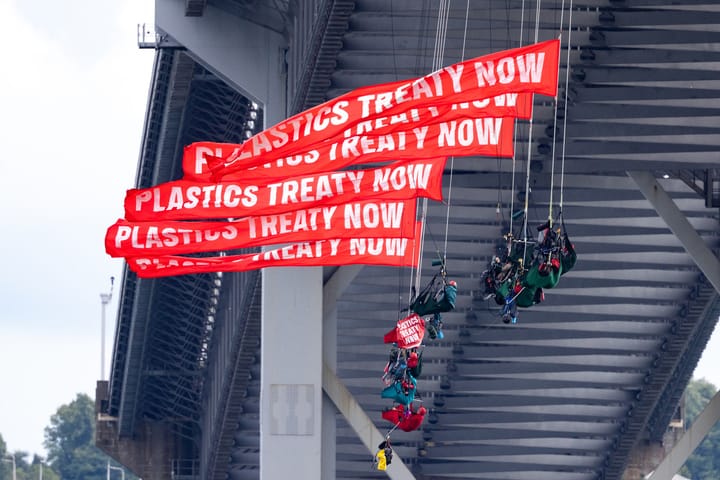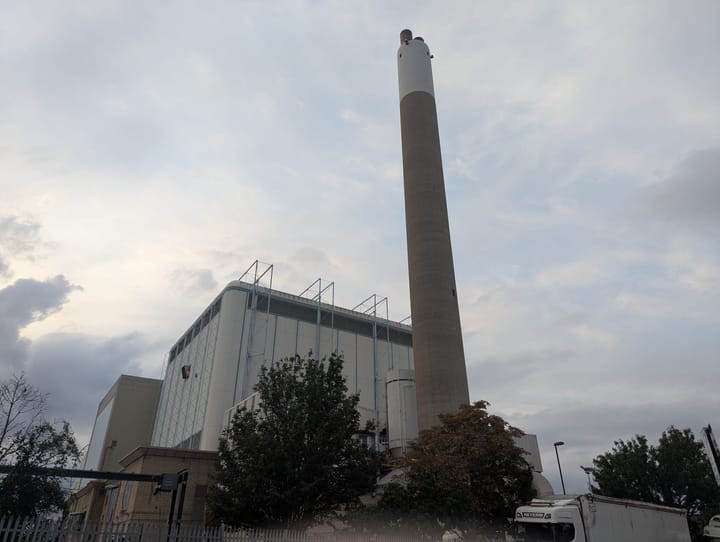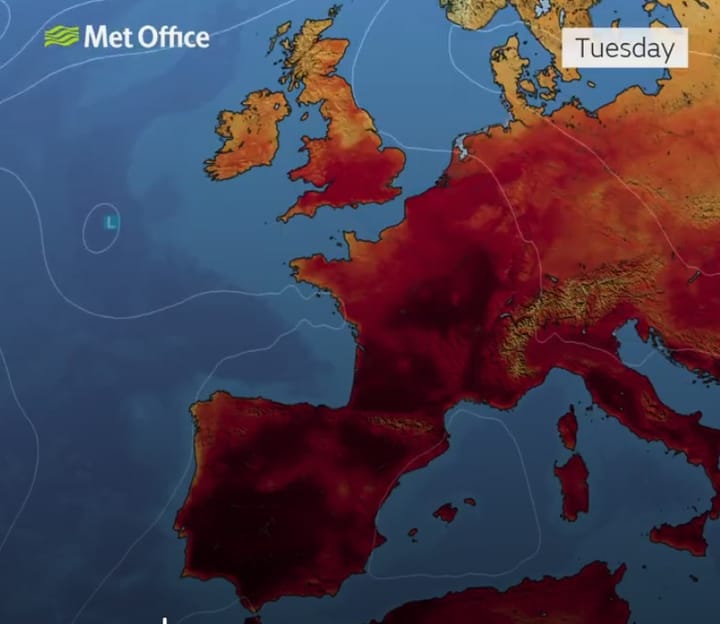Lewisham's wildlife struggles in early summer heatwave - here's how you can help
The climate crisis is eroding the familiar pattern of the seasons and causing heatwaves, droughts and flash floods. How is this affecting our fragile local wildlife and what can we do to help?
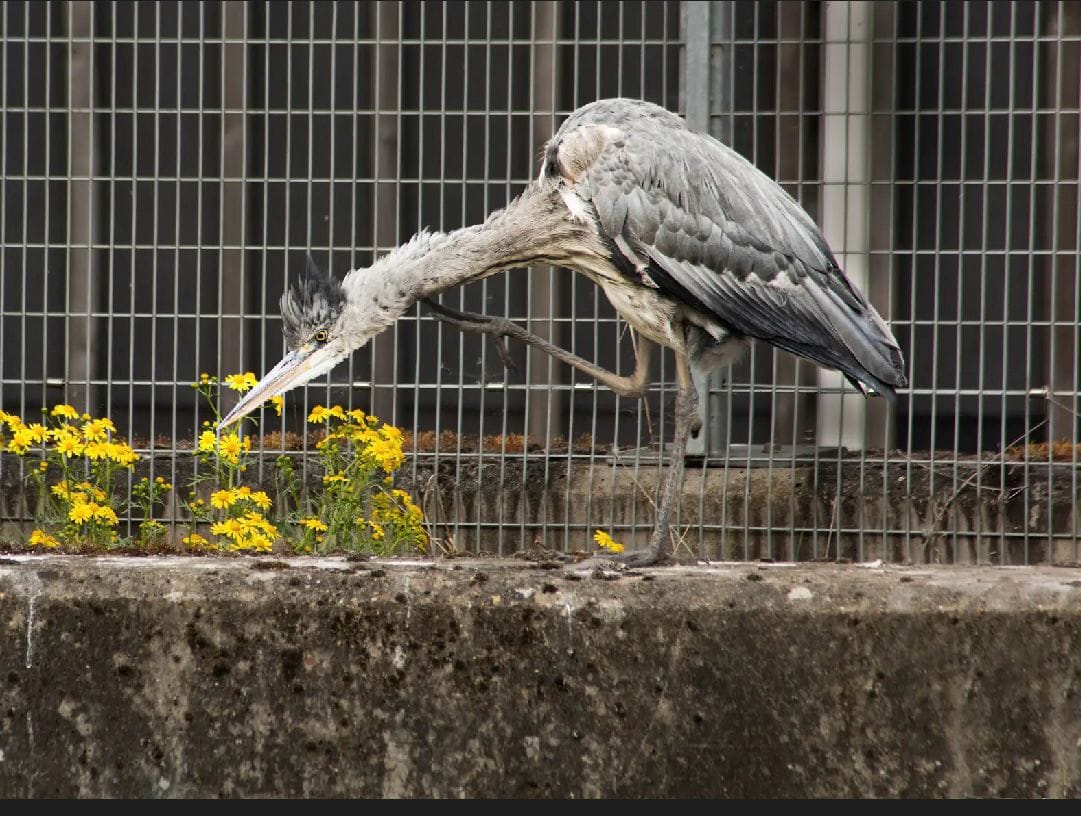
Scientists from Imperial College London at the World Weather Attribution hub confirmed that last weekend's heatwave was made 100 times more likely by the climate crisis.
The Met office, alongside the UK Health and Security Agency (UKHSA), issued an Amber Heat Health Alert, advising: “Heat can result in serious health outcomes across the population, especially for older adults or those with pre-existing health conditions.”
They also issued an air pollution warning for London. Nitrogen dioxide pollution produced by traffic breaks down in sunlight, resulting in high levels of ozone, another harmful pollutant.
The Met Office gave further advice to make sure that pets have water, ventilation and shade. At Hilly Fields Midsummer Fayre last Saturday, the dog and birds of prey shows were cancelled at short notice, because of the excessive heat.
But wildlife is on its own, facing the extreme weather events that humans have caused through the climate crisis.
Erratic weather and seasons - plants and animals
Mike Keogh is chair of Lewisham Biodiversity Partnership and vice-chair of the Quaggy Waterways Action Group. We asked him how the climate crisis is affecting Lewisham’s habitats and wildlife.
"The increasingly erratic weather confuses both flora and fauna and means that plants and animals can get out of - usually seasonal - ‘sync’," Keogh says.
"This may mean that food is not available 'on time' for broods. Migrating birds may find a lack of their particular expected food when they arrive."

Heatwaves and Lewisham's warming rivers
After England's driest spring on record, water levels in Lewisham's rivers - the Quaggy, Pool and Ravensbourne - were already low.
The high temperatures are further decreasing the river flow, due to increased evaporation and a loss of soil moisture and groundwater.
“The heat wave can mean that warmer rivers cannot hold enough oxygen,” says Keough. "Along with the warmer water, this can kill fish.
"It probably affects minibeasts too, but they will regenerate their populations more quickly, when conditions are more favourable.”
Birds that hunt across the water, eg kingfishers and herons may struggle to find the fish or small prey they need to feed their young.
Animals that depend on cool damp spaces and ponds are also at risk. Amphibians are particularly vulnerable as they lose moisture from their skin and need damp places to hide.

All types of birds and animals may overheat, find food sources dwindling or struggle to find water.
Trees and the "urban heat island" effect
"Urban trees, including street trees, are very important for shade, cooling and reducing the urban heat island effect," says Keogh.
"This effect may drive heavy clouds away or stop the rain precipitating, thus escalating the positive feedback of drought."
But trees may also be badly affected by extreme heat which affects their ability to grow and and photosynthesise, and may lead to early loss of leaves.
Heat stress is usually combined with drought. When repeated over a number of years, trees become vulnerable to disease or insect infestation, or may simply die off.
Changing conditions upset natural balance
"Introduced plant species may become more invasive due to the changing conditions," Keogh says. "As the local animals do not eat them and keep them under control, the natural balance is lost."
Keogh explains how low water levels - due to heat - expose river banks, which then become available for invasives species to colonise.
At Lewisham's Quaggy, a chain of events was set off, resulting in surface level flooding further downstream.

"Himalayan balsam outcompetes the local native plants. Its root system fragments the soil, so it erodes quickly in flash flood situations - which are happening more frequently with climate change."
The storm water can deposit silt further downstream, clogging bridges or tunnels and causing local flooding. Keogh points to the example of recent flooding at Ladywell Water Tower.
How to help wildlife through heatwaves
If you have any garden or use of green space:
- leave water out for wild birds, insects and bees, keep containers clean and topped up
- leave dark and damp, unmanaged areas for animals that need them
- include a small pond if possible and keep it topped up
- empty standing water out of buckets etc into the soil - mosquitoes breed quickly in warm 'puddles'
- empty bath water or redirect shower water onto your garden, after sunset. (The less soap/gel in the water the better)
- save rainwater and divert it to your pond or garden.
Keogh demonstrates his system of roof gutter downpipe diverters, water butts and repurposed wheely bins:
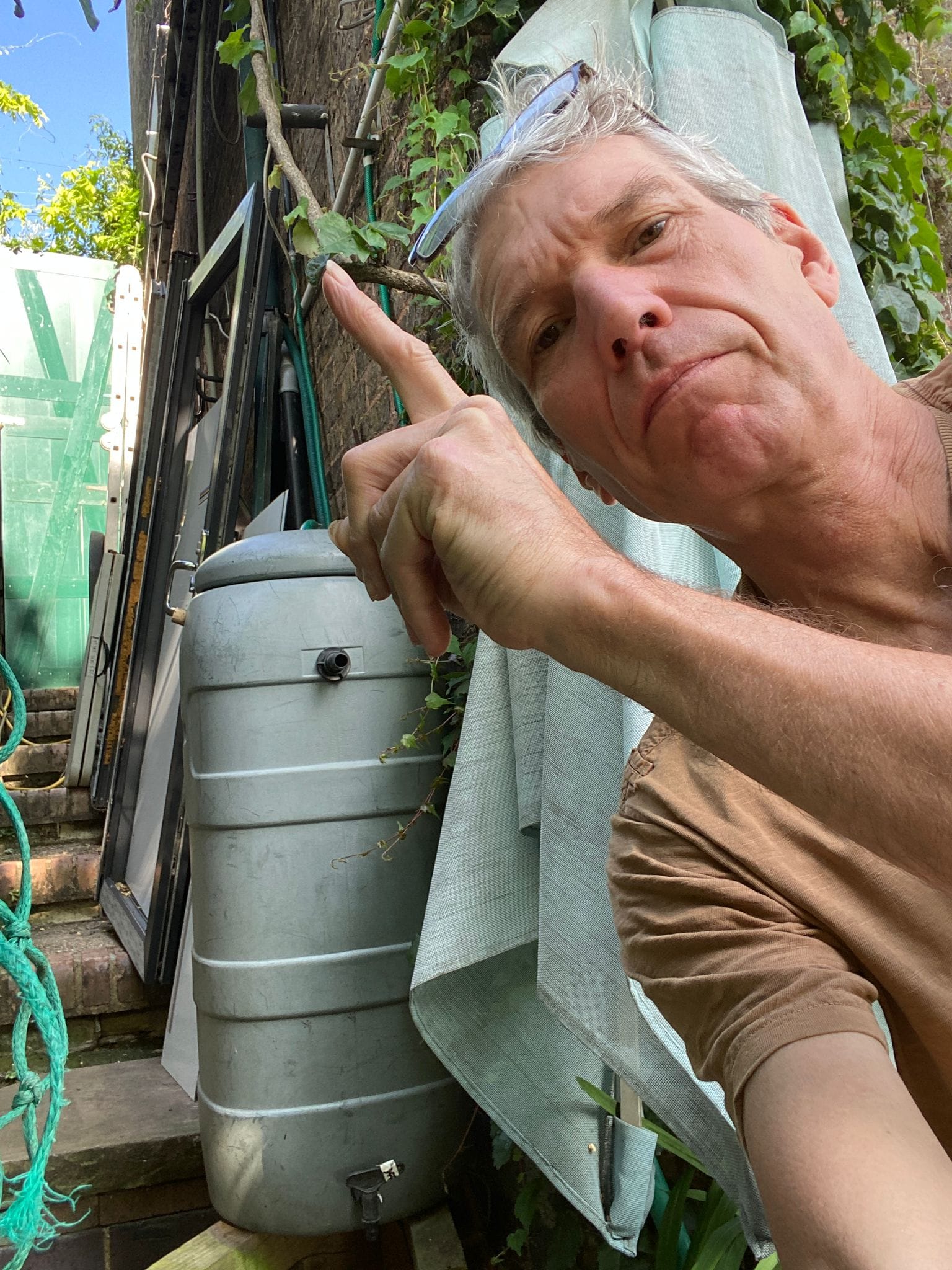
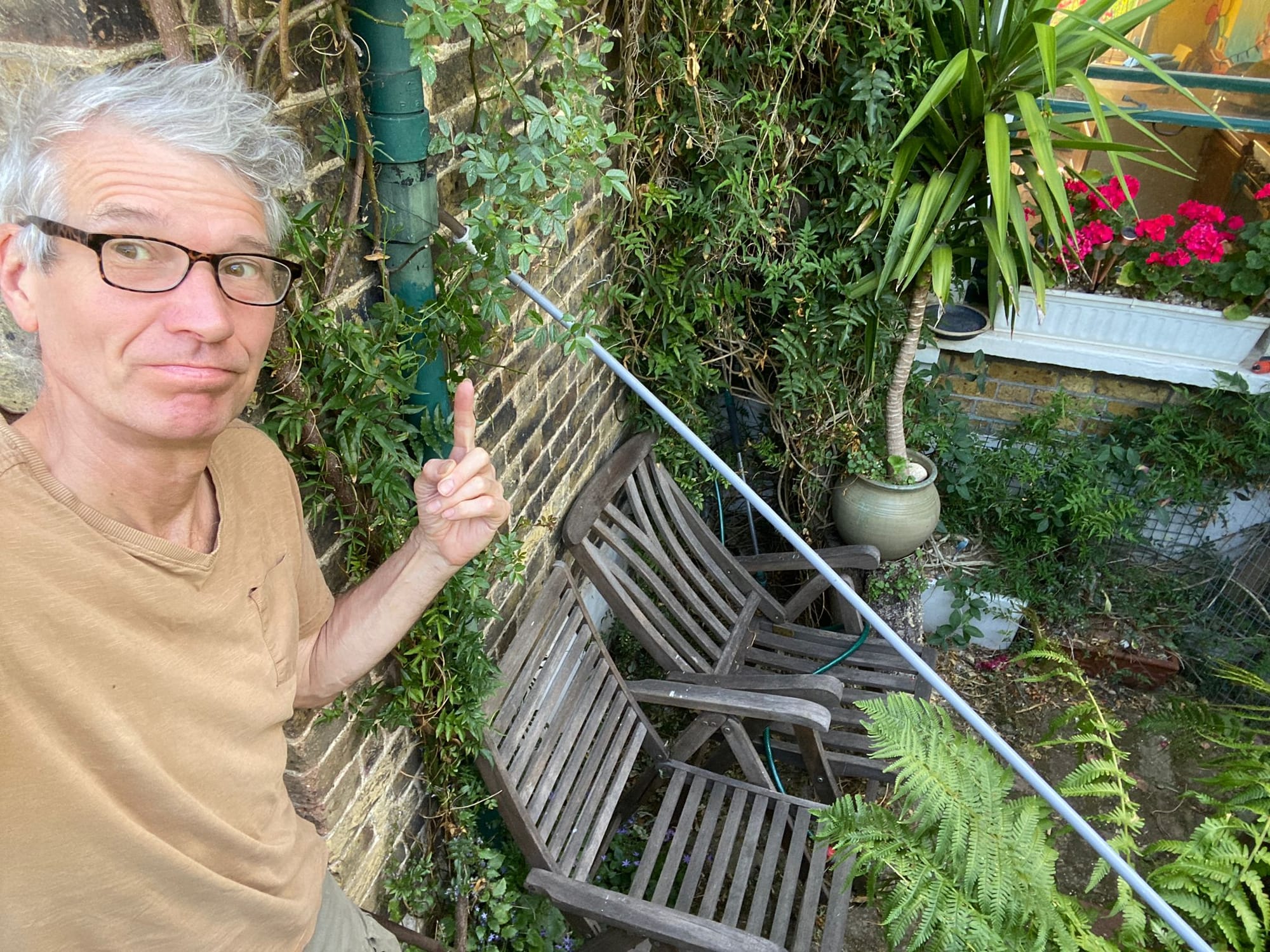
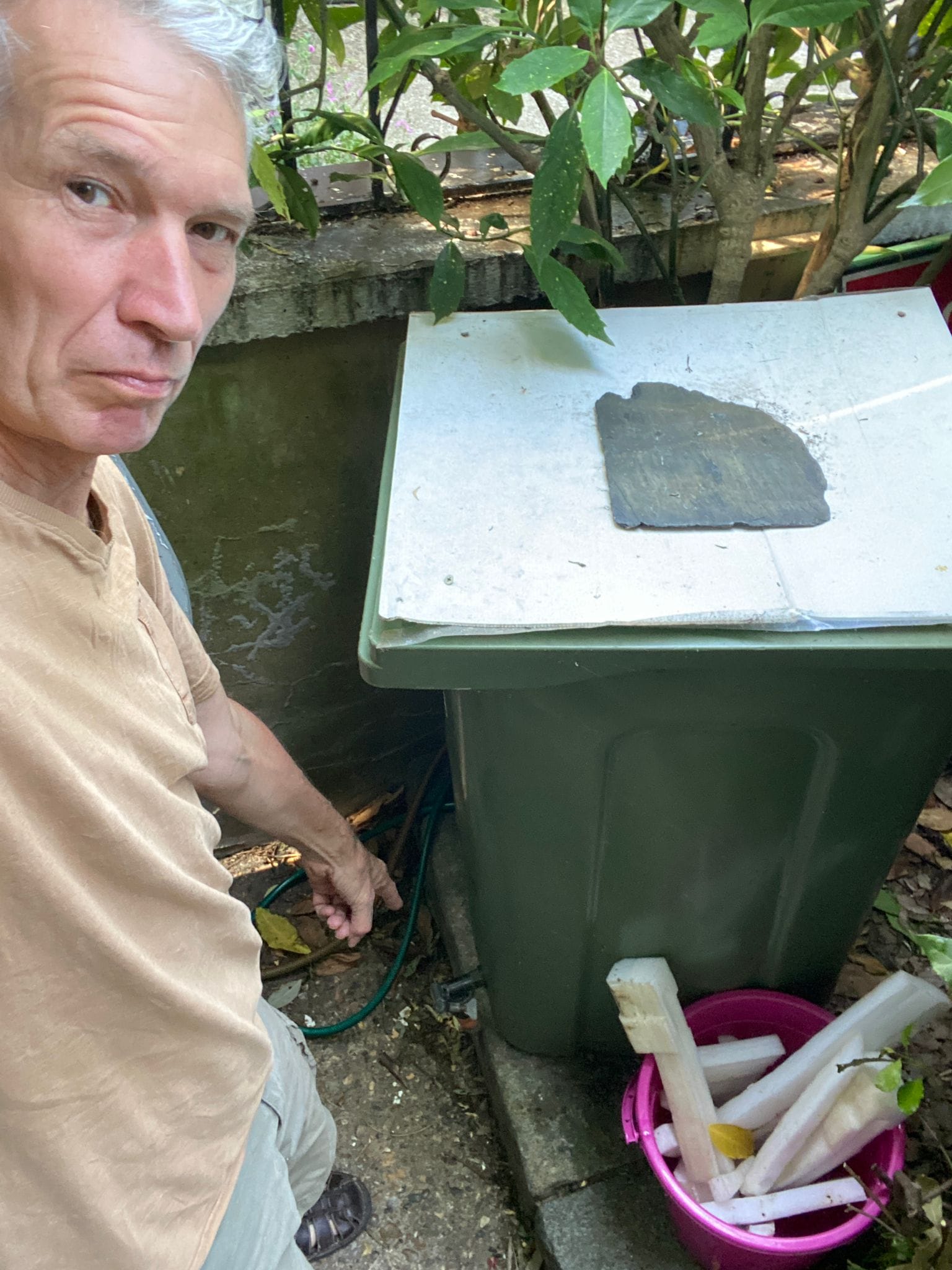
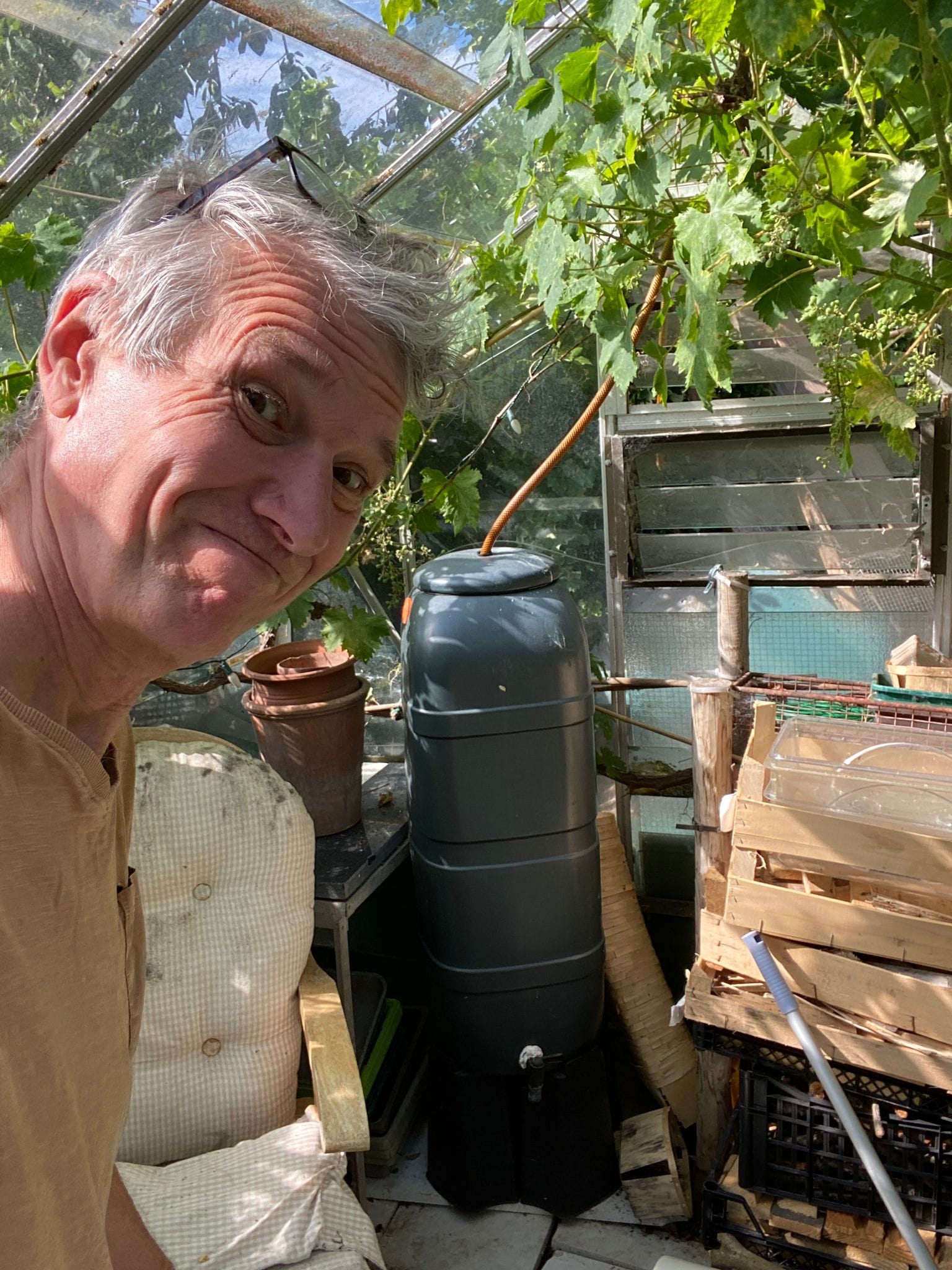

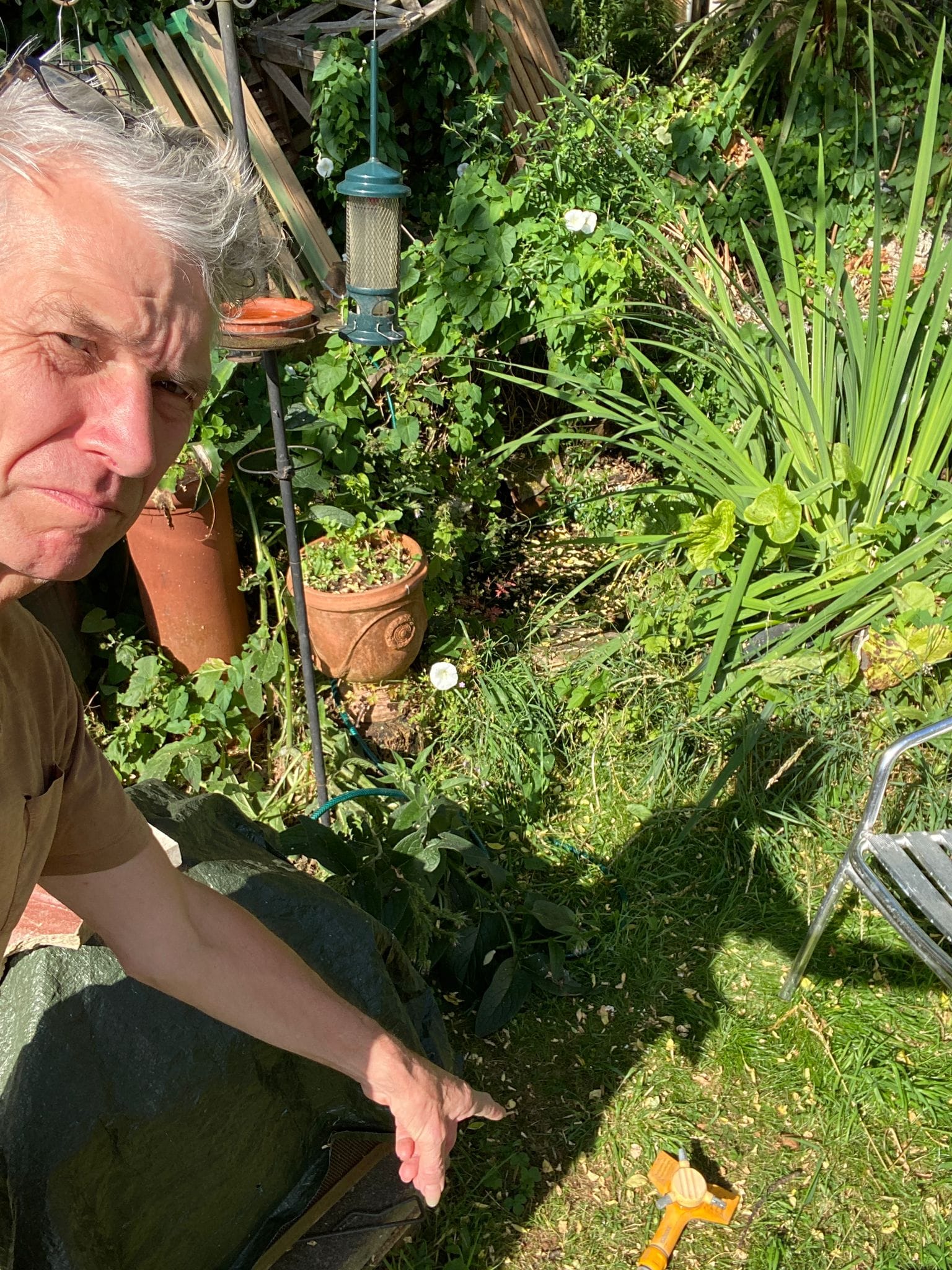
"I have a three series of water butts (and old modified wheeled bins) filling up in a cascade," he says.
"I just have to keep on top of the mosquitoes - a bit of vegetable oil on the surface can help suffocate them and biodegrade eventually.
Although sometimes I open the bins and compost at dusk for mosquitoes and fruit flies to escape to feed the bats!"
Thanks to Lewis Tuck for research for this article.

